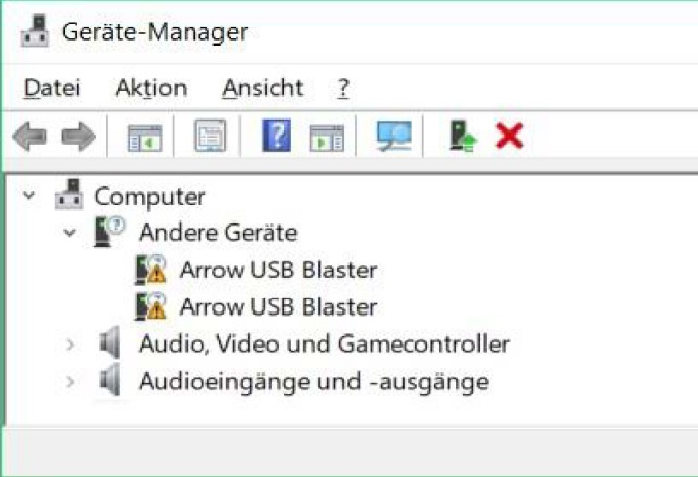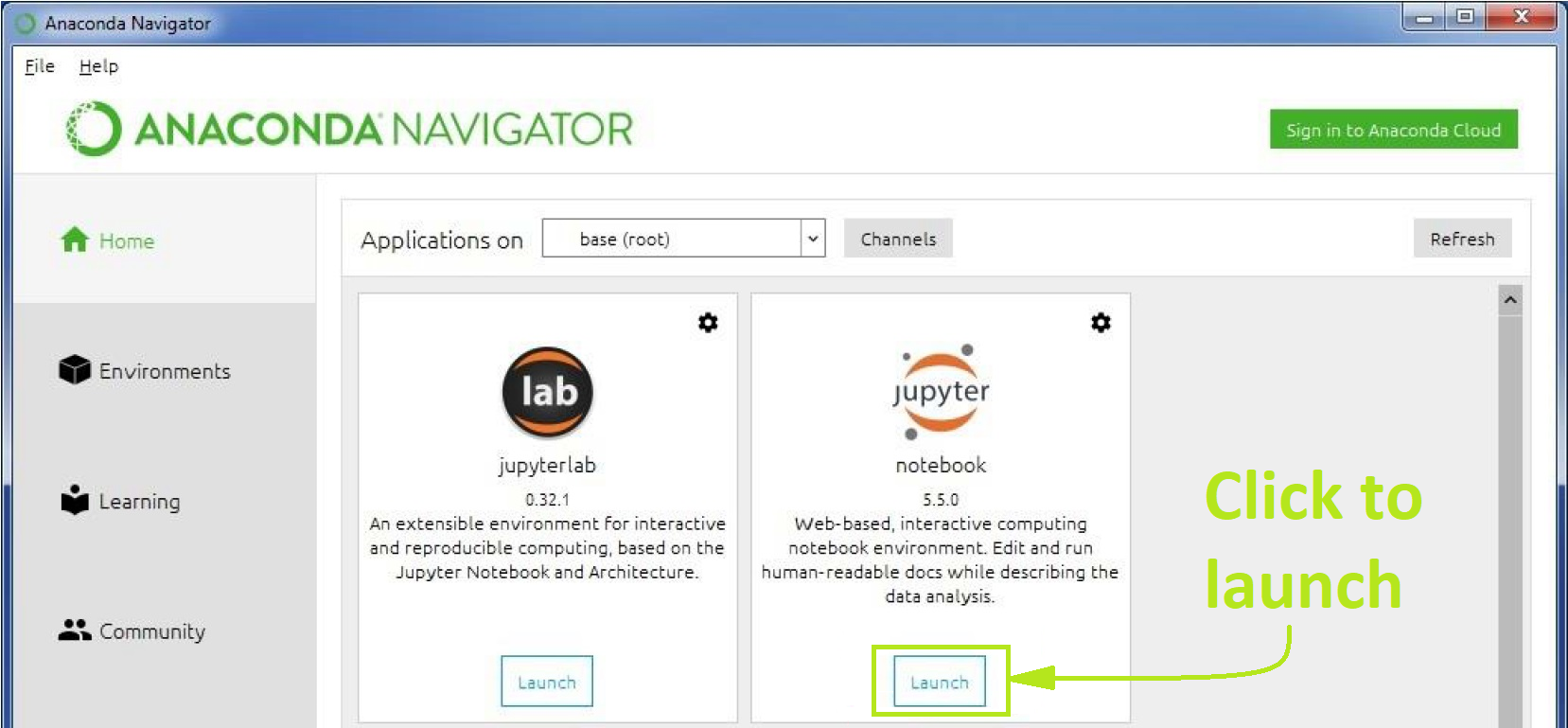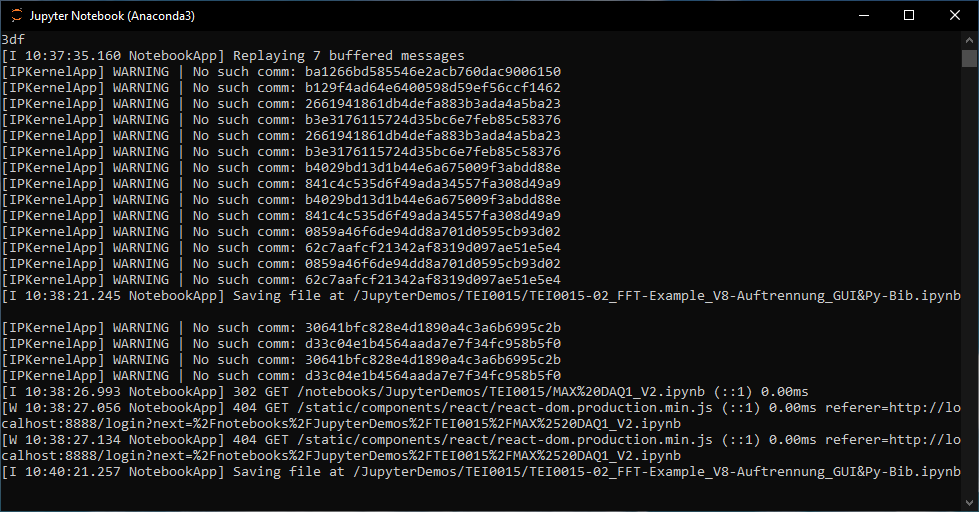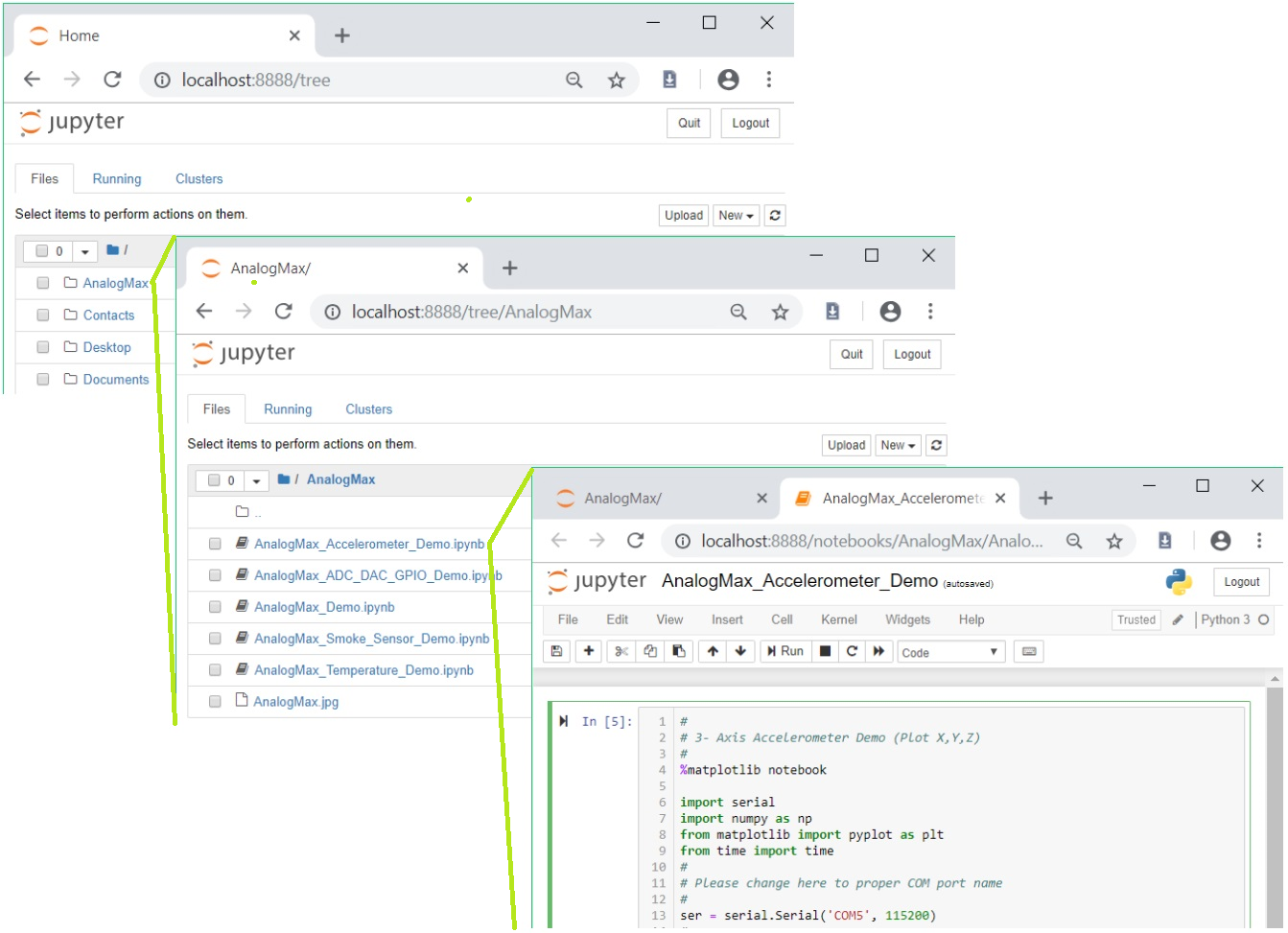Page History
Its for win 10, only
Step 1 - Install Anaconda.
Step 2 - Install package "pyserial"
Step 3 - Install the modules drivers
Step 4 - Place the notebook files inside your "user directory"
Step 5 - Start Jupyter via Anaconda or direct
Step 6 - Alter the comport to yours
Step 7 - Show linenumber / Starting with clearing the caches
Step 7 - Run the Notebook
Einleitung → Bildchen's der module
Warum benutzen wir Anaconda?/ Keine Autovervollständigung oder sinnvolle Fehlerausgabe... . Als extra Schmerz für Anfänger?!!??
IPython (Interactive Python) - is a command shell for interactive computing in multiple programming languages, originally developed for the Python programming language
ipywidgets - Interactive Widgets/GUI elements for the Jupyter Notebook
This manual privides an easy path for the installation
for running the AnalogMax
The modules of the the AnalogMax series offer software demonstrations of their basic functionality and
communication interface.
This manuel provides a step by step guide This manuals goal is to provide a simple instruction for installing the required software to run and running the demos / for running demos on certain modules.in general
For the ease of access and programability the programming language Python(ab Version since version 3.5) has been chosen.
The project Jupyter provides an excellent and open source entry for beginners.
Installtion of Jupyter via Anaconda
The demos for the modules rely on the Jupyter ... .
Jupyter files are called Notebooks and have the ending name.ipynb, this manuel refers to them as demo.
The following description of steps applies in its details to computers running windows, for other
operation systems they are in general similarThe simplest way to get the demos running in Jupyter is accomplished throw the installion of Anaconda,
this will install more than is needed but Jupyter is also installed without problems or much manual setup.
So running and editing the Demos requires the following steps:
• download and installation
- Step 1 - Installation of Anaconda
...
- respectively jupyter
- Step 2 - Installion of "pyserial"
- Step 3 - Driver installation for the
...
- module
- Step 4 - Making the demos accessible for jupyter
- Step 5 - Starting Jupyter
- Step 6 - Opening a demo
- Step 7 - Alter the comport to yours
- Step 8 - Run the Notebook
- Annotations
Installation of Anaconda respectively jupyter
The simplest way to get the demos running in Jupyter is accomplished throw the installion of Anaconda.
This will install more than is needed but nearly all requierementsin one step.
...
The Anaconda website provides detailed instructions on how to install the application, just follow the link
http://docs.anaconda.com/anaconda/install/windows/
The instructions and If the installer of Anaconda offer offers you the installation of optional application, just skip those, they are
not needed to run the demos or edit themtheir code.
Installation of Pyserial
At least with Anaconda installation on Windows, pyserial (python serial port support library) is not
included and hast has to be installed. This can be done from froma Anaconda command prompt.
To open the
Anaconda command prompt, just press the windows key and , type Anaconda prompt and open it. Enter
conda install -c anaconda pyserial
into the command prompt an press enter. This starts the search for software dependencies of pyserial,
to prceed you are asked to
proceed with the installation off these. In the end confirm the installtion, press Y to confirm.
The console shows a message when pyserial is installed and thereafter the command prompt console is no
longer needed
and can be closed.
Driver installation for the module
The communication with a module supposes a comport, and therefor a driver is requiered.
When connecting the modul with your computer, windows starts this the Automatic driver Installation,
but often the automatic driver installation fails and the driver needs to be installed manually.
So it is best practice to connect the module, give the opperation system some time, and check
afterwards in the device manager for the apperance of a
"comport" and two devices labeld
"USB Serial Convert A and B".
The device manager can be opened either via a right mouse click onto the windows symbole
ore or by pressing the windows button and typing device manager.
...
When instead two devices labeld "Arrow USB Blaster" are listed under "other devices", the manuell
approce approach has to betaken.
Update driver / context menu
Through a right mouse click on each device, the search for drivers can be started. Just follow the steps
and the installation of the drivers changes the devices name a context menue opens. Chose "Update driver" afterwordds chose
"Search automatically for updated driver software", this proper driver installtion changes the devices names
into USB Serial Converter A & B, in addition,
also the a comport is installed.
Check its number (“ComX” ) and memorize it for the later use within the demos.
In dependency to the modules firmware, the driver installation can leads lead to the appearance of two comports,
in this instance, the higher numbered comport is of importance.
...
Making the demos
...
accessible for jupyter
A convenient way to add the demos into Jupyter is to extract the downloaded file and extrackt the folder
ore files from the distribution archive to your user folder before you start jupyterThe demos for a module are compressed into a zip archieve and need to be extracted, to be accessible for
Jupyter. Jupyter has access to the user folder, so a convenient way is to copy the extracted demo folder
into your users folder, for example:
C:\Users\Username\distribution-folder
...
Starting Jupyter
Alternative kann man auch einfach nur Jupyter starten, es öffnet sich als Konsolenfenster, dass nicht
geschlßen werden, wohl aber minimiert werden darf
To start Jupyter, press the windows key and type Jupyter, this pressents "Jupyter Notebook (AnacondaX)" to you,
To open Jupyter, press the windows key and type Jupyter, this pressents "Jupyter Notebook (AnacondaX)" to you,
from which one can start Jupyter
Opening it does several things,
leads to the start of the Jupyter server, and a consol, which displays status messages of the Jupyter
server. The console must be open all the time, you want Jupyter to run. You can minimize it.
Simultaneously the Jupyter client is opened als a page inside your default browser.
When you no longer
it opens a console, in which Jupyter messages are displayed and also your default browser
is accessible through the Anaconda Navigator, press the windows key and type Anaconda
Navigator. Anaconda opens and to open jupyter, click launch, in the screenshot below, marked within
the red rectangle.
The application opens a tab inside your browser which displays your user folder.
Opening a demo
In our case, a left click on the demo
folder opens it an from there one can open a demo.
In the pictures below the steps are:
- Home folder
- Folder - AnalogMax
- Demo - AnalogMax_Accelerometer_Demo
Hints for the Notebook use:
IPython (Interactive Python) - is a command shell for interactive computing in multiple programming languages, originally developed for the Python programming language
ipywidgets - Interactive Widgets/GUI elements for the Jupyter Notebook
Step 7 - Show linenumber / Starting with clearing the caches
Clicking on the folder AnalogMax opens it.
...



